I'm actually doing almost exactly this at the moment, so perfect timing. This is going to be a "tidyverse"-heavy answer, but I really like the way it works.
purrr has some very handy map functions that make this incredibly smooth when combined with list-columns in tibble. Using your definitions (I'm not trying to optimise that)
library(data.table)
mtcars = data.table(mtcars)
factors = list(c("disp","wt"), c("disp"), c("hp"))
form = lapply(factors, function(x) as.formula(paste("mpg~",paste(x,collapse="+"))))
which provides a list of functions, these can be passed to purrr::invoke_map which applies a list of arguments (which you have) to a list of functions (in your case, just lm, but I suspect expandable to others too) with optional arguments (in your example case, mtcars). Using tibble, these are stored as a neat data.frame-esque list, otherwise they are returned as lm objects
library(tibble)
library(purrr)
models <- tibble(fit = invoke_map(lm, form, data = mtcars))
models
#> # A tibble: 3 x 1
#> fit
#> <list>
#> 1 <S3: lm>
#> 2 <S3: lm>
#> 3 <S3: lm>
The super-useful part comes when you want to do something to all of those elements, say, extract the fitted coefficients:
map(models$fit, coefficients)
#> [[1]]
#> (Intercept) disp wt
#> 34.96055404 -0.01772474 -3.35082533
#>
#> [[2]]
#> (Intercept) disp
#> 29.59985476 -0.04121512
#>
#> [[3]]
#> (Intercept) hp
#> 30.09886054 -0.06822828
or re-examine the formula used
map(models$fit, formula)
#> [[1]]
#> mpg ~ disp + wt
#> <environment: 0x0000000017ee73a8>
#>
#> [[2]]
#> mpg ~ disp
#> <environment: 0x0000000018392c58>
#>
#> [[3]]
#> mpg ~ hp
#> <environment: 0x0000000018471d18>
Furthermore, if you want to add some predictions from the models, this is easily achieved using broom::augment
library(broom)
models_with_predicts <- models %>% mutate(predict = map(fit, augment))
models_with_predicts
#> # A tibble: 3 x 2
#> fit predict
#> <list> <list>
#> 1 <S3: lm> <data.frame [32 x 10]>
#> 2 <S3: lm> <data.frame [32 x 9]>
#> 3 <S3: lm> <data.frame [32 x 9]>
You can get back to a data-level (with predictions) by unnest()ing, but this will combine all of your data (add a grouping level to keep the fits separate)
library(tidyr)
unnest(models_with_predicts, predict)
#> # A tibble: 96 x 11
#> mpg disp wt .fitted .se.fit .resid .hat .sigma .cooksd .std.resid hp
#> <dbl> <dbl> <dbl> <dbl> <dbl> <dbl> <dbl> <dbl> <dbl> <dbl> <dbl>
#> 1 21.0 160.0 2.620 23.34543 0.6075520 -2.3454326 0.04339369 2.933379 0.010222201 -0.8222164 NA
#> 2 21.0 160.0 2.875 22.49097 0.6221836 -1.4909721 0.04550894 2.954135 0.004351414 -0.5232550 NA
#> 3 22.8 108.0 2.320 25.27237 0.7326015 -2.4723669 0.06309504 2.928665 0.017217431 -0.8757799 NA
#> 4 21.4 258.0 3.215 19.61467 0.5743205 1.7853334 0.03877647 2.948162 0.005241995 0.6243627 NA
#> 5 18.7 360.0 3.440 17.05281 1.0943208 1.6471930 0.14078260 2.949120 0.020275438 0.6092882 NA
#> 6 18.1 225.0 3.460 19.37863 0.6122393 -1.2786309 0.04406584 2.957872 0.003089406 -0.4483953 NA
#> 7 14.3 360.0 3.570 16.61720 0.9897465 -2.3171997 0.11516157 2.931444 0.030948880 -0.8446199 NA
#> 8 24.4 146.7 3.190 21.67120 0.9053245 2.7287988 0.09635365 2.918183 0.034431234 0.9842424 NA
#> 9 22.8 140.8 3.150 21.90981 0.9165259 0.8901898 0.09875274 2.962885 0.003775416 0.3215070 NA
#> 10 19.2 167.6 3.440 20.46305 0.9678618 -1.2630477 0.11012510 2.957375 0.008693734 -0.4590766 NA
#> # ... with 86 more rows
